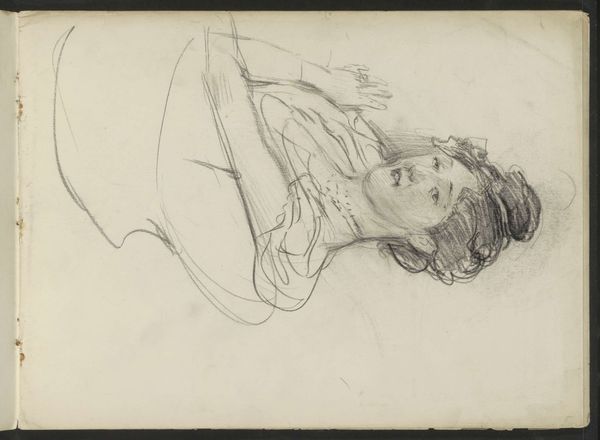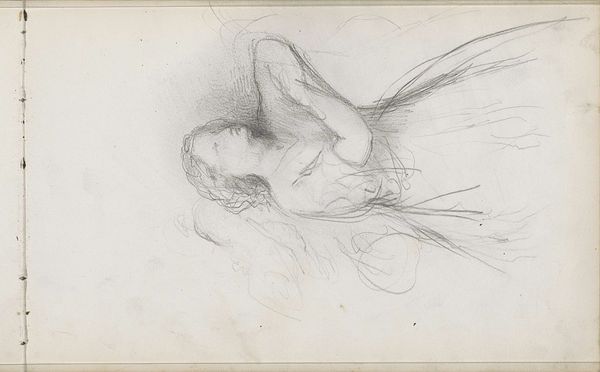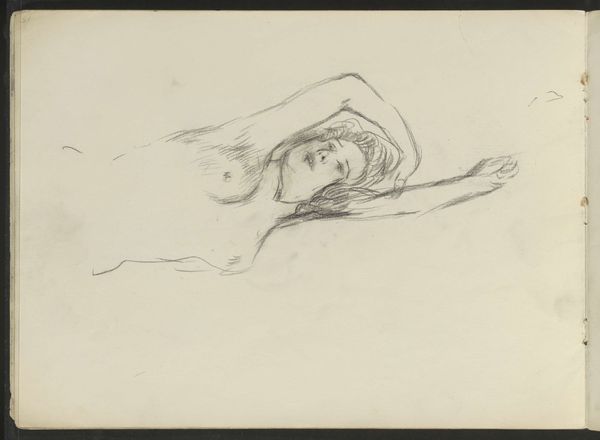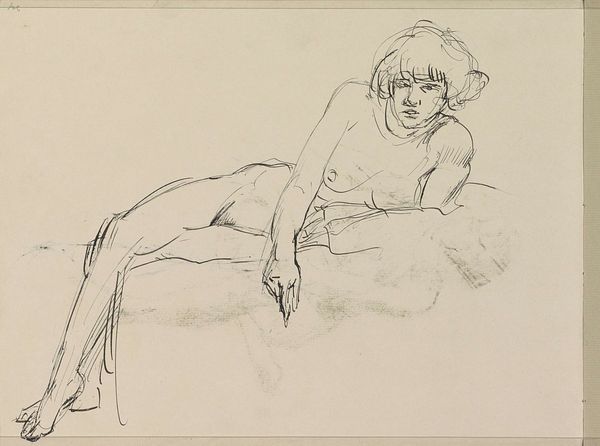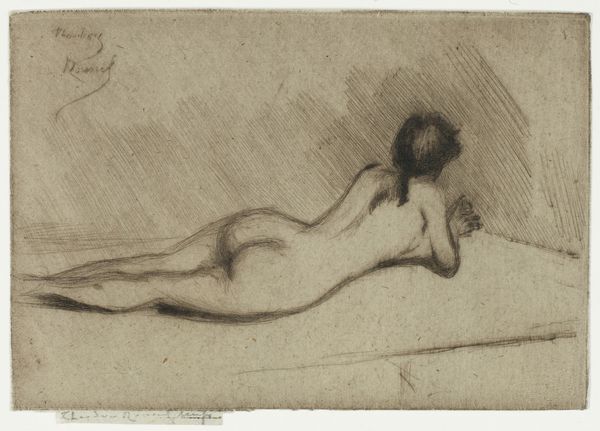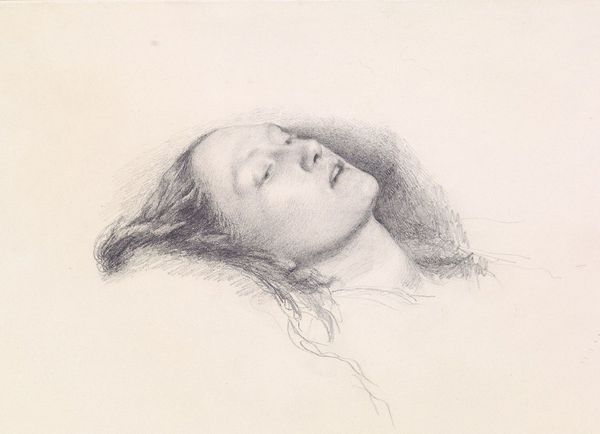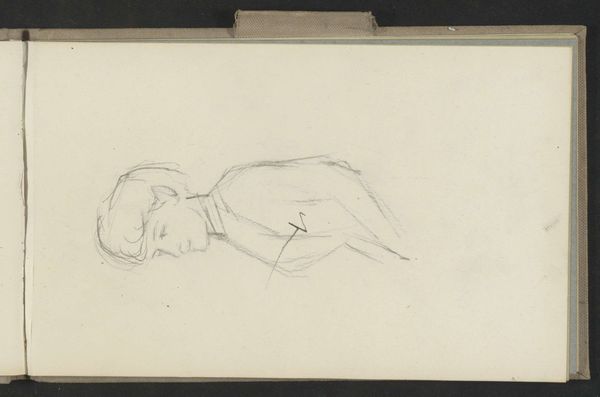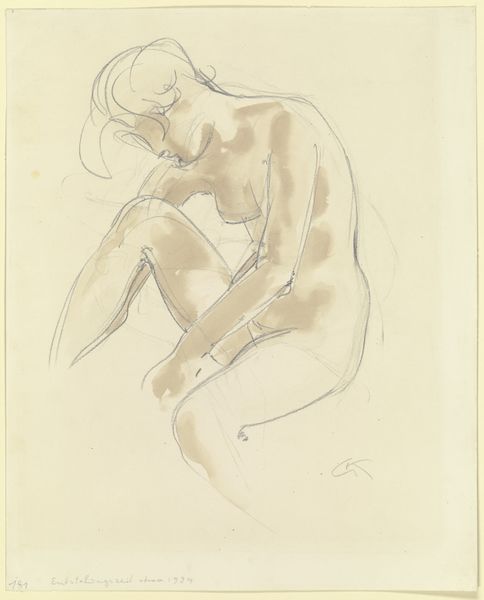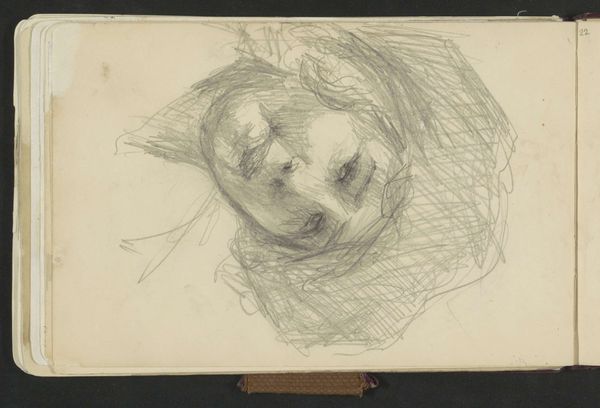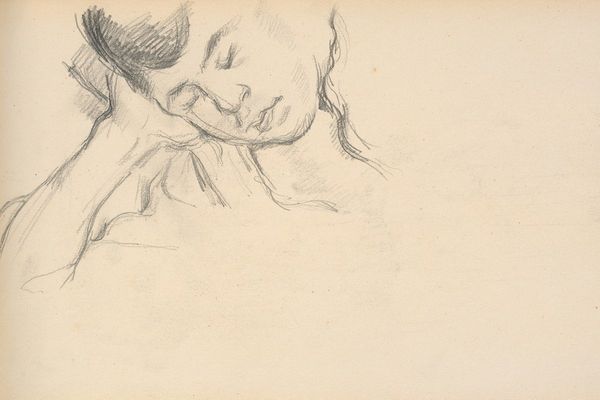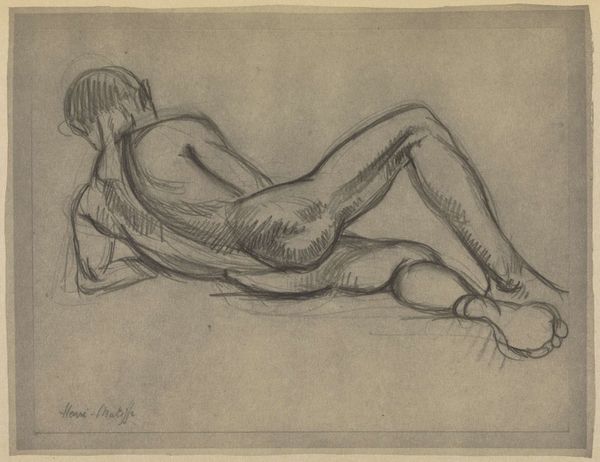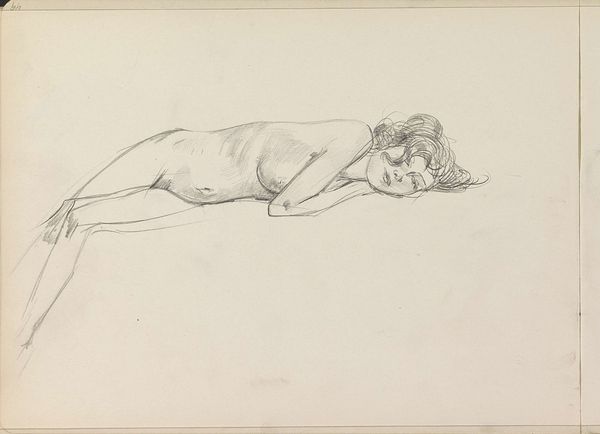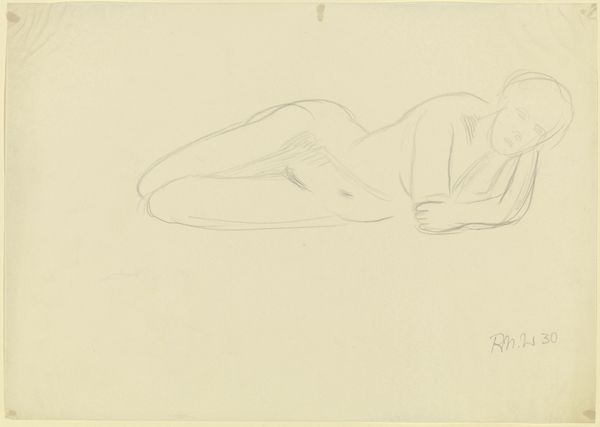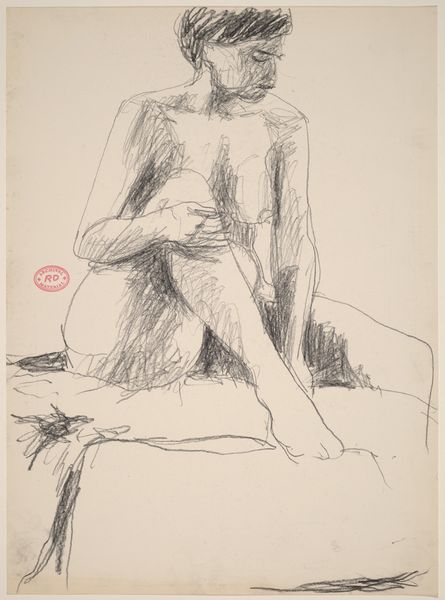
Copyright: Rijks Museum: Open Domain
Curator: This delicate pencil drawing, held in the Rijksmuseum's collection, is by Isaac Israels and is titled "Liggend vrouwelijk naakt, slapend," or "Reclining Female Nude, Sleeping." It dates to between approximately 1886 and 1934. Editor: Ah, a snatched moment. There's a quiet intimacy here. She seems completely at ease, lost in her own world. It feels very private, almost voyeuristic, doesn't it? Curator: Indeed. And it's important to recognize the context in which these nudes were often created. Historically, the male gaze has dominated representations of the female form. The sleeping woman, particularly, is often positioned as vulnerable, accessible. How do we negotiate that history here, knowing this was drawn by a male artist? Editor: That’s such a valid question, especially today! Maybe we can shift the focus away from that historical trope and view her as a symbol of personal freedom? I mean, there's strength in vulnerability, too, right? And her relaxed posture conveys a certain power, owning her space. Curator: Perhaps, although such an argument risks aestheticizing her position rather than examining structural issues of power inherent within the composition. But it does lead me to consider the work in conversation with feminist interpretations of the nude… I am more fascinated with its composition than symbolism, and appreciate how little it does. It gives me, the viewer, so much room for individual projection. Editor: I love how economical the lines are! He captures so much with so little. Like, just a few strokes suggest the curve of her body, the soft weight of her hair. It is masterful but simple, really. Almost feels like looking over his shoulder while he sketches in a cafe. Curator: Precisely. And her nudity, as is the historical standard for such works of art, arguably positions her in direct contrast with her surroundings and audience. As we consider contemporary politics of body image and female representation, how might such sketches play a role in dismantling hegemonic portrayals of female forms? Editor: Well, maybe by stripping away the artifice, by showing a real body in a relaxed state, Israels inadvertently contributes to that dismantling! She’s not posed or idealized, she just is. But perhaps, also inadvertently contributing to objectification by virtue of her slumber, but maybe that also says something of a male standard for vulnerability and access. Curator: These nuances, as we have pointed out, highlight why critical engagement with such works of art are crucial to understanding the complexities inherent to our artistic and social inheritance. Editor: Exactly! And hopefully, encourages more critical engagement for all of our listeners out there, regardless of what your social or academic inclination is!
Comments
No comments
Be the first to comment and join the conversation on the ultimate creative platform.
